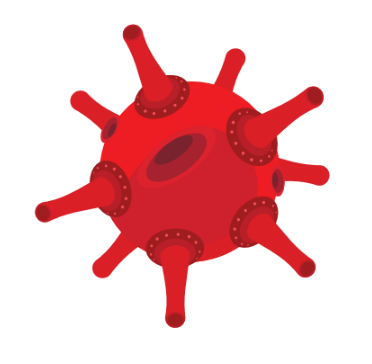
 AIDS is an acronym that carries a weight much heavier than its four letters.
AIDS is an acronym that carries a weight much heavier than its four letters.
The virulent disease is burdened by stigmas and shame, laden with the fears and misunderstandings of a society that shuns it. So this year in celebration of World AIDS Day, Georgia Equality took it upon themselves to chip away at the stereotypes.
Georgia Equality is an organization that advocates for the civil and social rights of the LGBT community in the state of Georgia.
The LGBT advocacy organization put on “Living With”, an interactive art exhibit focused on paying tribute to those living with AIDS, instead of those who have passed from it. Each artist was partnered with someone who suffers from AIDS, and tasked with telling their individual stories through art. It was a night of vulnerability and empowerment; heartbreaking stories told with courage and transparency.
“Living With” was a tapestry of eclectic experiences, an arresting display of a people who refuse to hide the truth of their lives. These are some of the stories of those people; small pieces of a much bigger movement interwoven together.
The foot soldier
When Emily Brown was 16, she had a doctor’s visit that she will never forget.
According to the current Georgia Equality employee, when she asked her doctor to get tested for HIV, the physician responded with a question that altered the course of her life. Brown had expected encouragement for being responsible about her sexual health; instead, her doctor asked the 16-year-old if she was promiscuous.
“That was a flashpoint in my life,” Brown said, reminiscing on the pivotal moment. “I realized that the way that people talk about HIV and sexual health is so stigmatizing that I didn’t want anyone else to feel that way.”
Her test came back negative, but Brown was forever changed. She decided to join the fight against those stigmatizations, and decades later she has found herself on the front lines of the battlefield. As a field organizer for Georgia Equality, Brown has spent the past two years working alongside those who have HIV and elected officials to “bridge the gap in knowledge between [LGBT] communities and those who represent our communities in state legislature and city councils.”
No matter how large the scope of her work has gotten, the HIV/AIDS advocate has never forgotten where this all started: as a brave 16 year old in a doctor’s office. In light of that, Brown also works with Georgia Equality’s Youth HIV Policy program, a sub organization started in response to the growing HIV rates amongst millennials in Atlanta.
“I consider myself an administrative assistant to the movement, which is to normalize living with HIV,” Brown said. “It’s not a death sentence, no one did anything wrong if you tested positive for HIV. We need to start talking about it like it’s everything else. It’s stigma that kills people- not HIV.”
The fighter
Stigma nearly did kill Georgia State student Mahlon Randolph. The public policy major was only 19 when he was diagnosed as HIV positive in the fall of his sophomore year. The dean’s list student had already received his associate’s degree in political science at Darton State College, but that semester ended in a 2.9 GPA and a downward spiral of secrecy.
“It was very detrimental to me. It was leading up to my last semester before graduation, but I decided to keep it to myself for an entire year before I decided to tell my family,” Randolph said. “I knew that keeping it to myself meant keeping my family. And I knew that once I told them, I would probably lose them. And lo and behold a year later, that was true.”
Nearly a year after his diagnosis, Randolph finally told his mother. It was a rocky point of contention: his relationship with her teetered on the edge of a cliff. And one day, after one too many arguments his mother decided she didn’t want anything to do with him. Down to his pillowcases, she threw away all of his belongings- and, even him, according to Randolph.
He told her in June. By July, the teenager had found himself homeless.
“She decided she didn’t want me in her home anymore, or in her life. She kicked me out, and wanted absolutely nothing to do with me. It was very difficult,” Randolph said. “But I think that where I’m at now, it’s enough to show that I was able to make it regardless.”
Because today, Mahlon Randolph is thriving. It has been two years since his diagnosis, one year since his mother kicked him out and the junior’s life has changed exponentially. He now has his own apartment, his own car and is putting himself through school. Beyond even those accomplishments, Randolph is heavily involved in AIDS advocacy and Georgia Equality’s Youth HIV Policy Program, actively fighting to push for the civil and social rights of the HIV community.
The boy who was once afraid to tell his family of his HIV status, is now a man who is proud to be a voice for those cannot speak for themselves. When he heard of the “Living With” exhibit being put on by Georgia Equality, he volunteered his own story to be a part of the interactive art gallery.
“I decided to be a part of the program because I wanted to have an opportunity to express my sexuality and my HIV status,” Randolph said. “I wanted to learn to become more unashamed of it, and be able to express it more to people, because I feel like that’s part of the process of desensitizing it: by finding ways to educate other people.”
The brother’s keeper
The art was for the audience, but for the artist who painted Randolph’s mural, it became his own catharsis as well.
The point of the “Living With” exhibit was to showcase different stories of those who are HIV positive, and each person is matched up with an artist. Ironically, when artist Myke Johnson and Mahlon Randolph were assigned together, they were already friends. But little did Johnson know just how much this particular project would mean to him.
“Once he started to reveal the homelessness and his HIV status, it started to help me with my own issues, because I was raped at 19,” Myke Johnson said. “Even though we both got diagnosed with HIV at 19, our modes of transmission were a lot different. I locked away my trauma…I was literally raped on a Thursday, and went back to school that Monday.”
At the time, the Tennessee State graduate simply returned to his everyday grind as college student, swept up in his studies and marching band. As an adult, Johnson suffers from PTSD and is plagued by seizures; a condition that once affected his ability to paint.
“This [project] really was hard for me because this is forcing me to deal with some of my own issues. By having to take on this project and listen to what he’s [Randolph’s] going through, but still have mine locked away, I kind of had to unlock my own [issues] and deal with them,” Johnson said.
However, unlike Randolph, Johnson’s parents were supportive of him from the very beginning of his diagnosis. Now, Johnson feels a certain responsibility to be his brother’s keeper, and to be there for those who don’t have anyone. So when Randolph stumbled into his life, he knew it was for that exact reason.
“I’ve gone through all of the issues- the medication, the side effects, the stigmas and the people disowning you just for what you have in your bloodstream. So it was important for me to send a message to Mahlon that everyone’s not like that. Everyone’s not going to abandon you. My villages rallied around me- so therefore I can rally around you,” Johnson said.
One of the painter’s favorite childhood movies is Lilo and Stitch, because he lives by the Hawaiian saying “Ohana”; an oath that translates to “family means nobody gets left behind, or forgotten.” To him, creating the art piece and being equally open with Randolph was keeping that promise- he wouldn’t abandon him, and he couldn’t let him down.
The piece was a success – a multifaceted, beautiful rendering of Randolph’s experience with swirling blue and red hues. But even more beautiful is the brotherhood that has bonded the two men. Johnson’s family has adopted Randolph into the fold as a pseudo son, giving Randolph a family again and Johnson a brother.
And as they built their bond and this project, both of them learned to be unashamed; to live the truths of their lives out loud. Which was the purpose of the exhibit – not to pay tribute to those who have died, but to those who are living with AIDS: breathing, laughing, and loving. Alive, in every sense of the word.
“One of the quotes that I had put on my piece is that I want to be like the ocean: large and vast, but always unashamed,” Randolph said. “That’s what it’s really about: being unashamed of who you are and being unashamed of your experience.”
Did you know?
- Over 50,000 Georgia residents have HIV.
- Our state ranks 6th for total number of people living with HIV.
- Our state ranks 3rd for total number of people living with AIDS.
According to georgiaequality.org
More About Georgia Equality
- As one of the only organizations of its kind and caliber in the state, Georgia Equality is actually split into two different corporate entities: Georgia Equality, Inc. and the Equality Foundation of Georgia, Inc. Learn more at georgiaequality.org and get involved!
